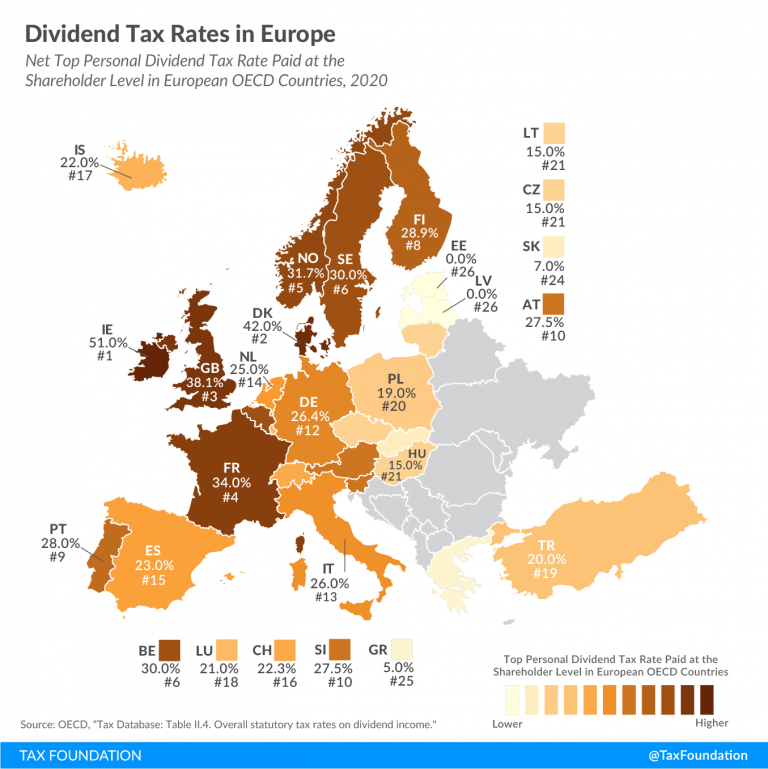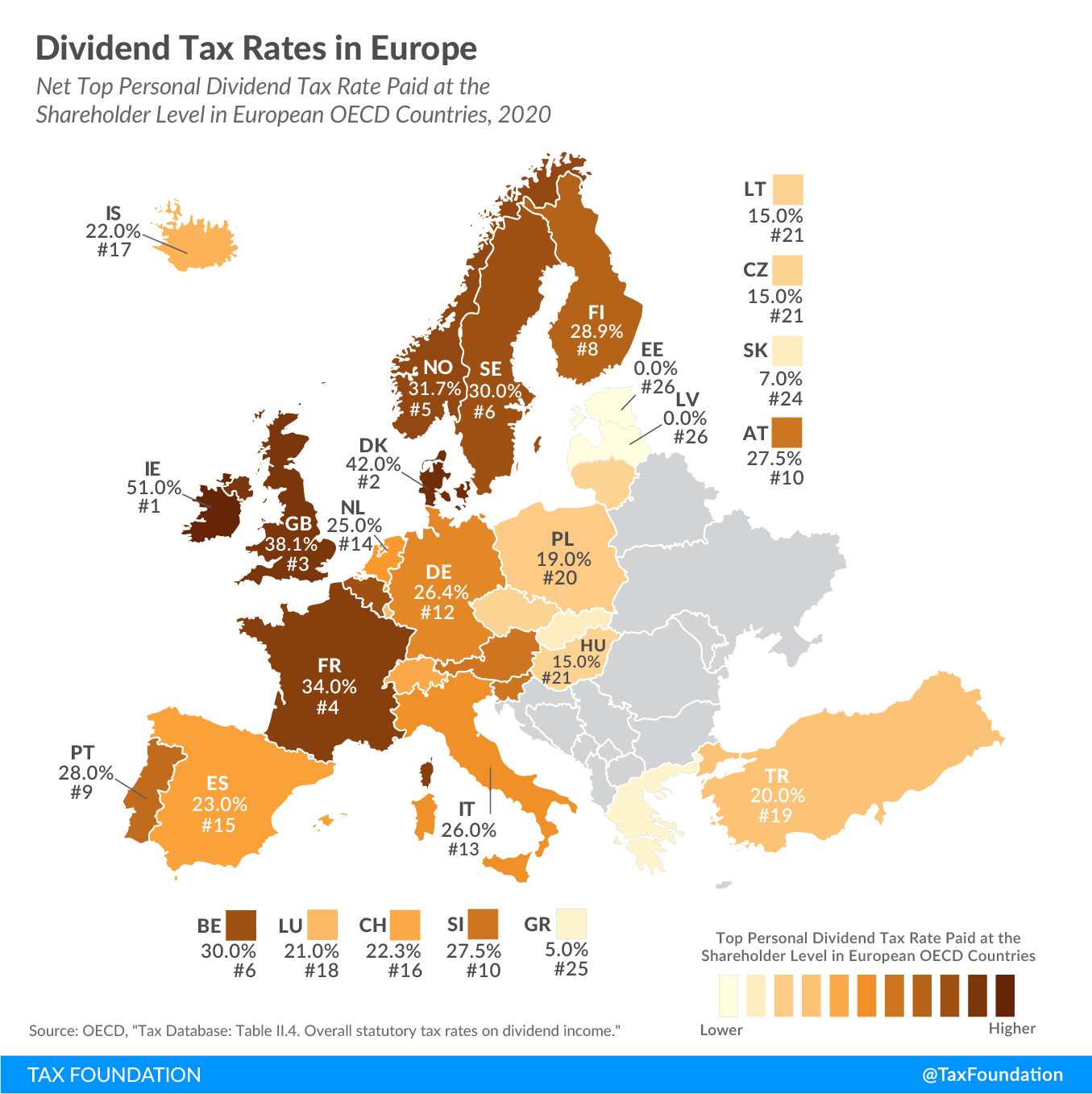Tax Policy – Dividend Tax Rates in Europe
Many countries’ individual income tax systems tax various sources of individual income—including investment income such as dividends and capital gains. Today’s map shows how dividend income is taxed across European OECD countries.
A dividend is a payment made to a corporation’s shareholders from corporate after-tax profits. In most countries, such dividend payments are subject to dividend tax. The dividend tax rates shown in the map below are expressed as the top personal dividend tax rate, taking account of all imputations, credits, or offsets.
Ireland has the highest dividend tax rate among European OECD countries, at 51 percent. Denmark and the United Kingdom follow, at 42 percent and 38.1 percent, respectively.
Estonia and Latvia are the only two European countries covered that currently do not levy a tax on dividend income. This is due to their cash-flow-based corporate tax system. Instead of levying a dividend tax, Estonia and Latvia impose a corporate income tax of 20 percent when a business distributes its profits to shareholders.
Of the countries that do levy a dividend tax, Greece has the lowest tax rate, at 5 percent, followed by Slovakia, at 7 percent.
European OECD countries levy an average dividend tax rate of 23.3 percent.
In many countries, corporate profits are subject to two layers of taxation: the corporate income tax at the entity level when the corporation earns income and the dividend tax or capital gains tax at the individual level when that income is passed to its shareholders as either dividends or capital gains. Some countries, however, have integrated their taxation of corporate and dividend/capital gains income to eliminate such double taxation.
Source: Tax Policy – Dividend Tax Rates in Europe


